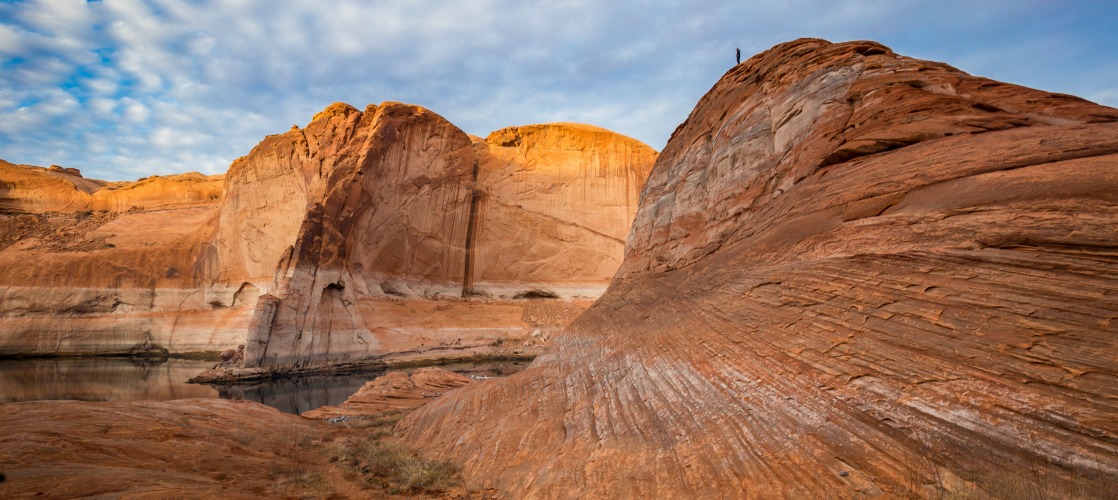I could not have been more than 10 years old, standing gangly-legged in a stretched out one-piece bathing suit on the hot sandstone. My father was, and still is, a boatman at heart and he and my mother had packed up our old suburban with a week’s worth of food, two windsurfing boards, several inflatable pool toys, and our two border collies. We’d made the trek from Ketchum, Idaho to Bullfrog in southern Utah, one of a few big marinas on Lake Powell. I distinctly remember how hot the rocks were beneath my bare feet as I hopped out of the car, and how warm the murky water was that I splashed around in to keep cool as my parents loaded the goods from the car into the houseboat that was ours for the week.
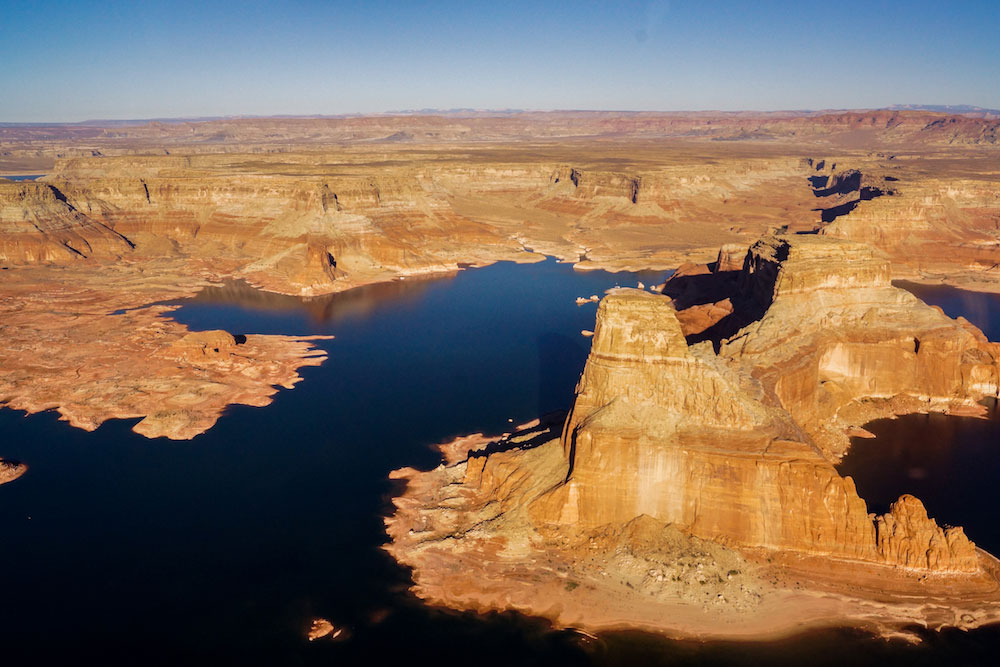
Lake Powell was new territory for us, and boating in the desert seemed strange and foreign to me. My dad, armed with maps that he’d studied for weeks beforehand, was ready to venture deep into the reservoir’s narrow, meandering canyons, looking for secret little nooks to stay the night, ancient ruins to explore, and vast sandy beaches where we could unload the dogs and toss a frisbee.
At the time, I had no concept of anything existing beneath the water we motored across. Towering red and white sandstone cliffs seemed to rise out of nowhere, narrowing towards one another as we veered further away from the heart of the lake. What was above water was spectacular, and I was young and unsuspicious of the consequences of creating this watery playground. We explored ruins and slot canyons, found exquisite beaches, and passed by cliffs, arches and sandstone formations that left us in awe.
I’ve read Edward Abbey’s rants on Glen Canyon. I’ve studied ancient cultures of the desert Southwest. I’ve heard many lectures on water policy and I’ve followed dam debates. I know that water levels are low and temperatures are high. But no amount of schooling or reading or conceptual grasping could have elucidated the sensation of sitting on a raft, floating down a canyon that used to be flooded with water—a distant section of Glen Canyon’s Lake Powell now reclaimed by a fully flowing river.
Through a network of ambitious and adventurous friends in my now hometown of Salt Lake, I’d been introduced to Eric Balken, the director of Glen Canyon Institute (GCI), a non-profit organization dedicated to the restoration of Glen Canyon and a free flowing Colorado River. Balken had invited a group of 50 people to join him in celebration of the organization’s 20th anniversary. On Earth Day weekend in April, 2016, we gathered at the Hite boat ramp in blustering winds that drove sand into our faces and brought whitecaps to the river. For the past 50 or so years, the Hite boat ramp’s significance was associated with the end of Cataract Canyon on the Colorado River, a notorious section of wild whitewater. It also signified the end the river’s natural flow and the beginning of Lake Powell reservoir. But on this day it was something entirely new, or maybe historic in this case; it was the start of a float down the newly free-flowing section of the Colorado River in upper Glen Canyon.
The seven mile stretch from Hite to Farley Canyon that we were about to float (or, in this case, paddle relentlessly against a whipping headwind) isn’t the most exciting, remote, or aesthetic stretch of the Colorado River, Balken explained, but the significance of the journey could not have been more noteworthy, and you could see it on his face as we pushed the boats from shore.
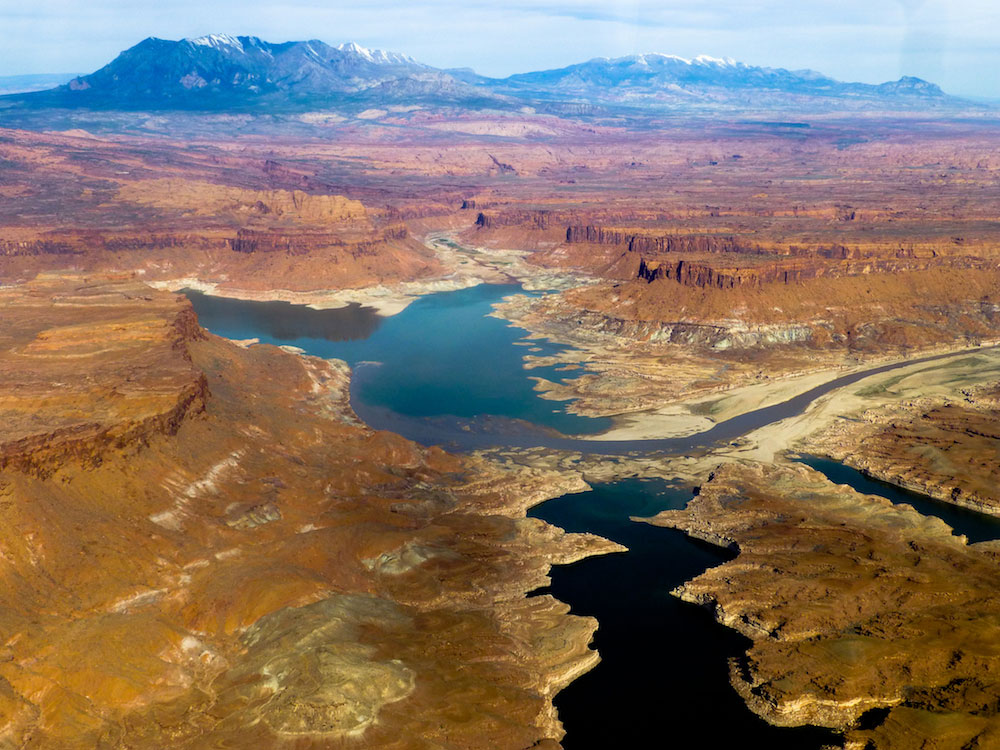
“For decades, much of this area was under 100 feet of water, thought to be permanently lost to Lake Powell,” Balken explains. “Running the river through any part of Glen Canyon would be considered a river-runner’s pipe dream if you suggested it in 1999 when Lake Powell was full. But growing demand, over-allocation, and a warming climate have changed the reality of Colorado River politics, and have brought Lake Powell and its sister reservoir Lake Mead to record low levels. This reality has created serious challenges for cities and farms in the Southwest that rely on Colorado River water, while opening up the potential for one of the biggest river restoration sites in the world.”
GCI was founded in 1996 by Richard Ingebretsen, along with the help of legendary conservationist David Brower. Ingebretsen, MD, PHD, is a physician and faculty member at the University of Utah School of Medicine and Department of Physics, and is the founder and President of Utah Wilderness Medicine. He stood on the riverbank in heavily worn sandals, a t-shirt that had seen many desert trips, and an old and loosely fit baseball cap.
Ingebretsen and Balken, who has been working for GCI for over ten years, share more than just desert dirt-covered shirts and childlike grins in common; they’re both big dreamers and optimists with sharp intellect and enormous dedication to this cause. “We could see all of Lake Powell drained and returned to river in the next fifteen years,” Balken said to me, which, when you think about draining the 13.7 million acre feet of water that currently fill Lake Powell, is an ambitious goal.
Glen Canyon Dam, which holds back the Colorado River and is the reason Lake Powell exists, was completed in 1963. “It is considered by many to be one of the biggest environmental mistakes in our nation’s history,” says Balken.
Built for the purpose of water storage in the upper Colorado River Basin, the dam was approved by congress in 1956 under the Colorado River Storage Project Act (CRSP). The decision was made to dam Glen Canyon after a series of negotiations with Brower, also the executive director of the Sierra Club at the time, who was fighting a proposed dam on the Green River upstream in Dinosaur National Monument. The Bureau of Reclamation and Brower struck a deal: a dam would not be built in Dinosaur as long as the Sierra Club would not fight the CRSP and a dam at a remote location downstream near the Utah – Arizona border.
“Brower had made history,” Balken explained. “It was the first time an environmental group actually stopped the construction of a major dam. But in doing so, he had inadvertently sacrificed Glen Canyon, a place he had never been to. Six trips down the Colorado river later, the gravity of his decision set in.”
Glen Canyon is sandwiched between Grand Canyon National Park and Canyonlands National Park in southern Utah. Prior to its’ flooding, Balken explains, “it was a wonderland of spires, cliffs, grottoes, and gorges. It was a calm, babbling section of the Colorado River – the dream river trip. It has over 125 side canyons. It was a place where the waters of the Green, Colorado, San Juan, Escalante, and Dirty Devil Rivers all converged. Home to two of the world’s largest natural bridges, it was a geologic utopia sacred to 22 Native American tribes.”
When Balken talks about Glen Canyon you can hear one part river rat and one part canyon eco-nerd in his voice. He’s frustrated, like many other river-goers, to know that a stretch of river that could very well parallel the Grand Canyon in scenery and invigorating experience, is underwater. But he has done his research too, and together with GCI he has spearheaded ten scientific studies on the region.
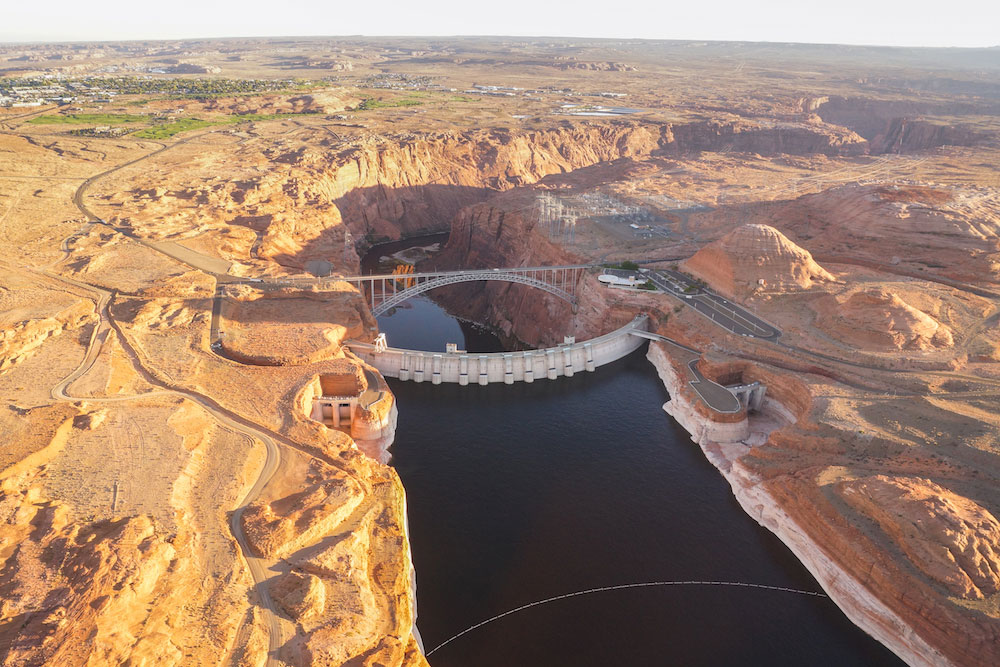
It took 17 years after the completion of the Glen Canyon Dam for Lake Powell to fill to its maximum water height. “It drowned 186 miles of the biological heart of the Colorado River,” says Balken. “This area was home to over 4,000 known Native American ruins, and it was a habitat that supported more than 79 species of plants, 189 species of birds, and 34 species of mammals. After the filling of Lake Powell, four endemic fish species were put on the endangered species list. ”
Capitalizing on a wave of outrage over the construction of Glen Canyon Dam, David Brower, in association with the Sierra Club, led a successful campaign against two proposed dams in the Grand Canyon in 1968. “They won,” said Balken, “It was a momentous victory and it marked the end of the era of building big dams, and a new era of environmental consciousness in the U.S.”
When Brower joined forces with Ingebretsen to found GCI in 1996, their mission was to restore the flow of the Colorado River through Glen Canyon and downstream Grand Canyon, with the initiative to move water stored in Lake Powell downstream to Lake Mead. Dubbed the “Fill Mead First” proposal, the group hoped their efforts and extensive research would allow the otherworldly landscape of Glen Canyon to come back to life.
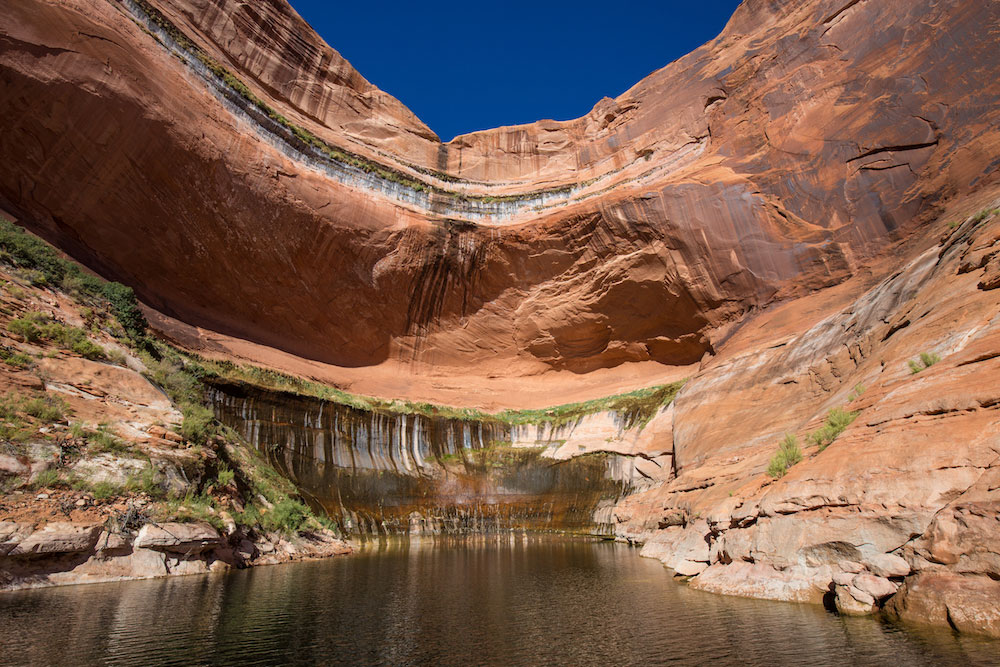
It is easy to get lost in Balken’s steady stream of information and convincing argument for draining Lake Powell, but I had to remind myself that I had been one of those house-boaters floating around on the refreshing Colorado River water that filled the intricate crevasses of Glen Canyon. I had really enjoyed the experience, but I wasn’t sure if I should admit that as we paddled past a defunct marina across from the Hite boat ramp that now sat hundreds of yards away from the water line—a dried up and abandoned reminder that times are changing no matter what side of the argument you’re on.
Lake Powell is disappearing, but it isn’t totally related to any major activist-driven movement. “The deficit is partially a result of the river’s over-allocation,” Balken explains. “When the Colorado River Compact was signed into law in 1922, it was assumed that the river’s natural flow was 16.4 million acre feet, much greater than the more realistic average of 15 million acre feet. Water rights were divvied up to states based on bad data, and as they developed their shares, it quickly became overdrawn.”
Climate change is the other factor behind the region’s water woes. Several climate studies over the past decade have suggested that a warming climate is reducing spring runoff and may drain both Lake Powell and Lake Mead within 20 years. This spring, Lake Powell was 46 percent full, while Lake Mead, its downstream counterpart, was a mere 37 percent full. This year, and the two years prior, Lake Mead has dipped to its lowest point since it began filling in 1936. Water storage between the two reservoirs has dipped to its lowest combined amount since Lake Powell began filling in the 1960s.
Emptying Lake Powell into Lake Mead was a pretty outlandish argument to make just a few years ago. But, this year the water crisis has given it more weight than ever. According to data published in the Journal of the American Water Resources Association in 2011, Lake Powell loses massive amounts of water to ground seepage in the porous sandstone walls. Even with higher evaporation at Lake Mead downstream, combining the two reservoirs at Lake Mead could save up to 300,000 acre-feet of water every year. That’s as much as the entire state of Nevada’s annual allotment. “It doesn’t make sense,” says Balken. “Built to save excess water, the data suggests Lake Powell actually undermines that effort by losing precious water in a system that can’t fill even one reservoir.”
They may have been a few years before their time, but Ingebretsen and Brower’s “Fill Mead First” campaign may be the first step in the right direction for those who want to see the Colorado and Glen Canyon restored. From where I sat on our 16-foot raft at the bottom of the canyon, it’s obvious the water is going somewhere—I guess it’s just a matter of where it goes (or doesn’t go) now.
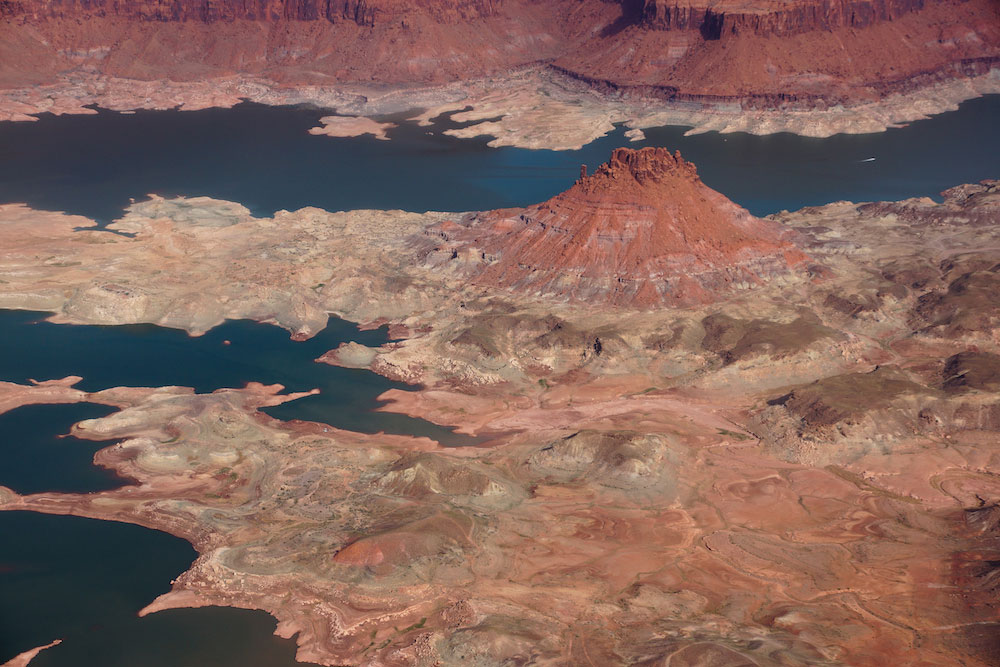
Even when you’re talking about tens of millions of acre-feet, water is limited, which in this case is both a solution and a problem. On one hand, many consider it a great success to see Glen Canyon emerge from the depths of Lake Powell, letting the Colorado flow a little deeper into its native territory. On the other hand, its emergence is due to great water loss and a drought that’s impacting more than just the American Southwest. So what do we celebrate?
We were likely the biggest group to float this section of Glen Canyon in 50 years—since the flooding of Lake Powell took over the natural flow of the river. We paddle seven miles downstream and pulled off into Farley Canyon, where we draw our boats from the river as its flow slowed to a near stillness. We celebrate doing something that not many people have done in the past half century; we celebrate seeing canyon walls that were new to the sunlight and roaring winds. We celebrate the company of fellow river travelers and passionate individuals who do want to see a change happen, despite the complications of the debate.
As Ingebretsen and river advocate Gary Wockner made speeches to the crowd, we recognized how far the movement has come. But for all of us, it was impossible to ignore the fact that this success was at the expense of a major shortage that has the potential to change our world indefinitely. Systemic water shortage on the Colorado River is forcing decision makers to reevaluate the way this all-important resource is managed, and rightfully so. But, as Balken put it, “It’s offered a silver lining in the opportunity of getting Glen Canyon back.”
At least for now, it feels to me like a fight along side, rather than against, “the system.” It’s a fight that recognizes the multitudes of issues at hand, and not just the man-made ones. Maybe it’s a fight that Balken and his colleagues will win, directly or indirectly, as water levels in Lake Powell continue to dwindle. Maybe in our lifetime we’ll have the chance to be some of the lucky individuals, as the great river-runner and one of the earliest river guides, Norman Nevills, put it, “to thrill to the remote fastnesses of these spectacular great canyons.”




